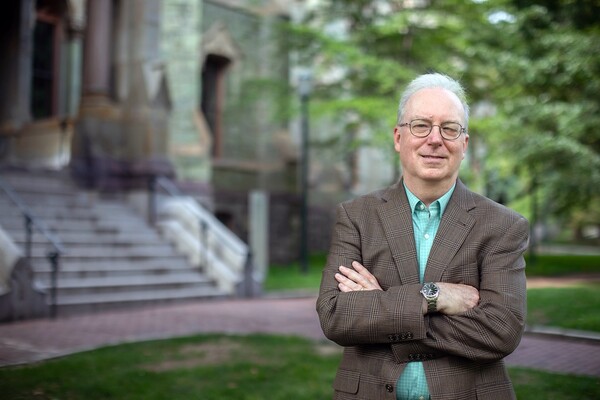
nocred
Two physicists, Peter Higgs and Francois Englert, received a Nobel Prize in Physics earlier this week, honoring their work on a theory that is now known as the Higgs field, which gives particles mass.
Thousands of scientists from around the world contributed to the discovery of the particle that proves the existence of the Higgs field, the Higgs boson. Brig Williams, Joseph Kroll, Elliot Lipeles, and Evelyn Thomson, professors in the Department of Physics & Astronomy in the School of Arts & Sciences, along with their students, postdoctoral fellows, and technical staff, have played a large role in the design and construction of ATLAS, one of the two main particle detectors responsible for the discovery, and in the observation of the particles into which the Higgs boson decays.
“Being a part of this monumental discovery has been the experience of a lifetime and the culmination of decades of work for us," says Williams. “It is especially gratifying to me that the graduate students and postdoctoral fellows played such a large role.”
“Higgs and Englert elegantly solved a key question by positing the existence of a new particle, now known as the Higgs boson,” Lipeles says. “Our work in searching for and ultimately detecting the Higgs was driven by the important role the particle plays in the theory of particle interactions. It is not clear whether we would have found this particle without the prediction, or even built an accelerator such as the Large Hadron Collider [LHC] capable of finding it. The combination of the theoretical prediction and the experimental detection is truly a triumph for science.”
In the 1960s, Higgs and Englert, along with other theorists, including Robert Brout, Tom Kibble, Carl Hagen, and Gerald Guralnik published papers introducing key concepts in the theory of the Higgs field. On July 4, 2012, scientists on the international ATLAS and CMS experiments, performed at the LHC at CERN laboratory in Europe, confirmed this theory when they announced the discovery of the Higgs boson.
The LHC works by accelerating protons around its 17-mile-long circular track in opposite directions. When the beams are crossed inside the detectors, the protons collide in a huge explosion of energy that can create new particles. The problem inherent in trying to detect the a Higgs boson is that, as soon as the particle is created, it immediately breaks apart into particles that fly off in different directions.
Penn’s main contributions to the ATLAS detector were in developing the electronics that help capture the results of those proton collision outcomes in its inner detector, as well as a process that helps the researchers record only the most noteworthy collisions, as millions of them occur every second.
By tracing the energy and trajectory of this shrapnel as it passes through the detectors, researchers were able to piece together the mass of the original particle.
Evan Lerner

nocred

Image: fcafotodigital via Getty Images

Image: Mininyx Doodle via Getty Images

Charles Kane, Christopher H. Browne Distinguished Professor of Physics at Penn’s School of Arts & Sciences.
(Image: Brooke Sietinsons)